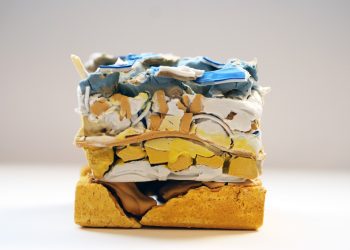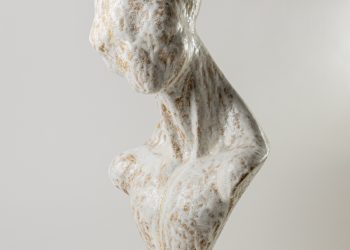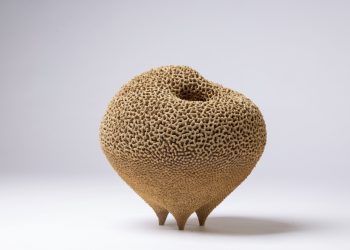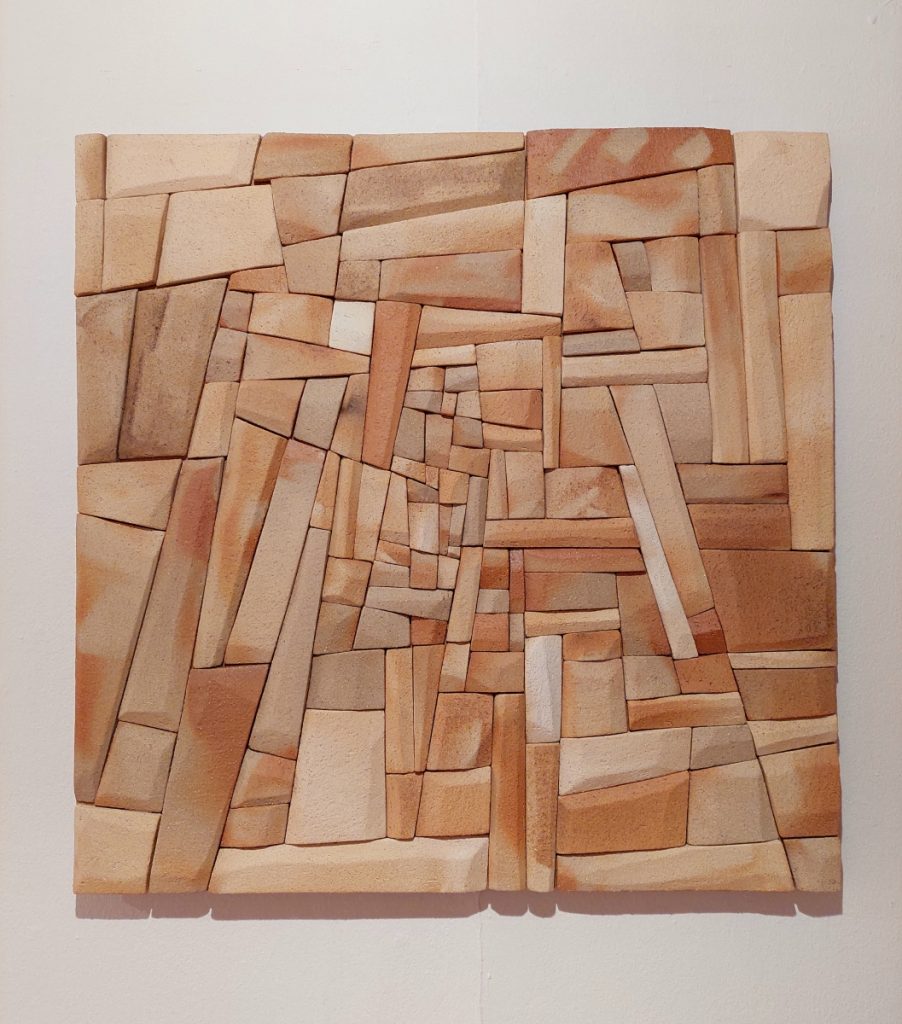
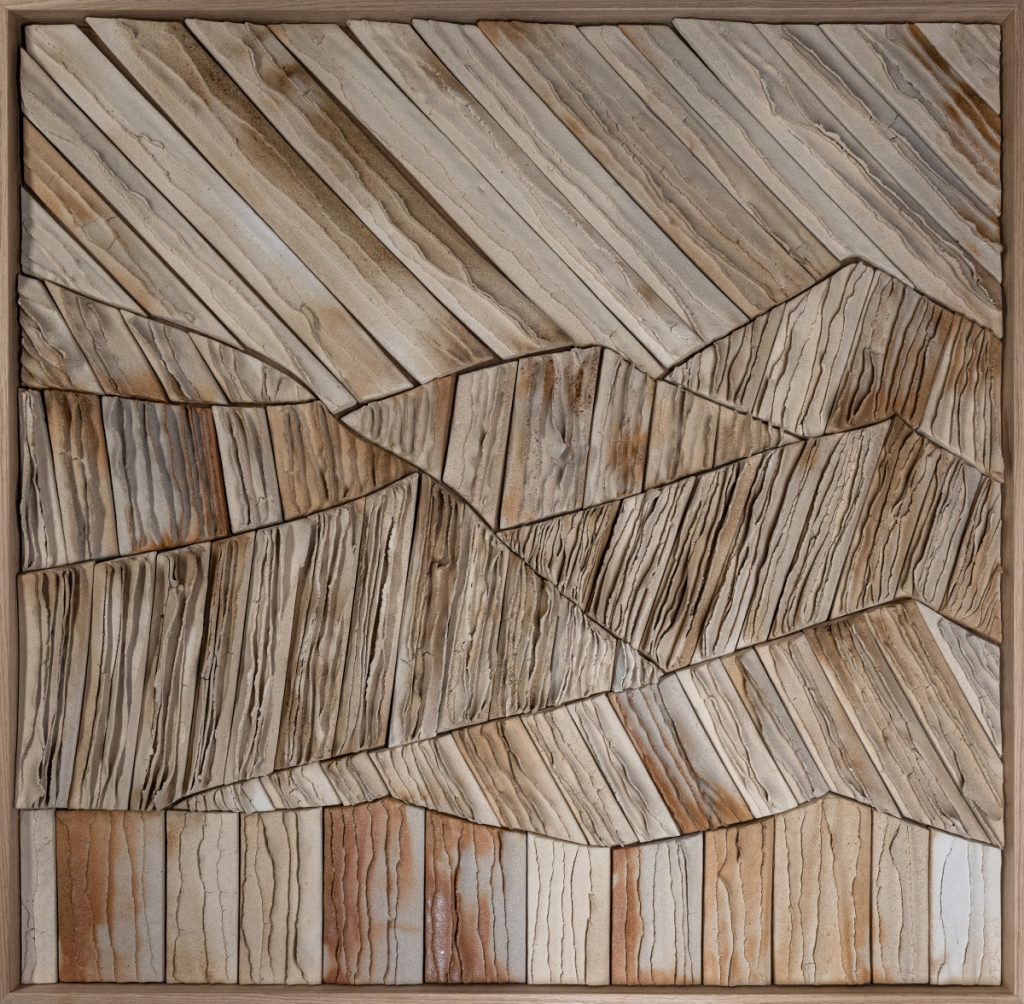
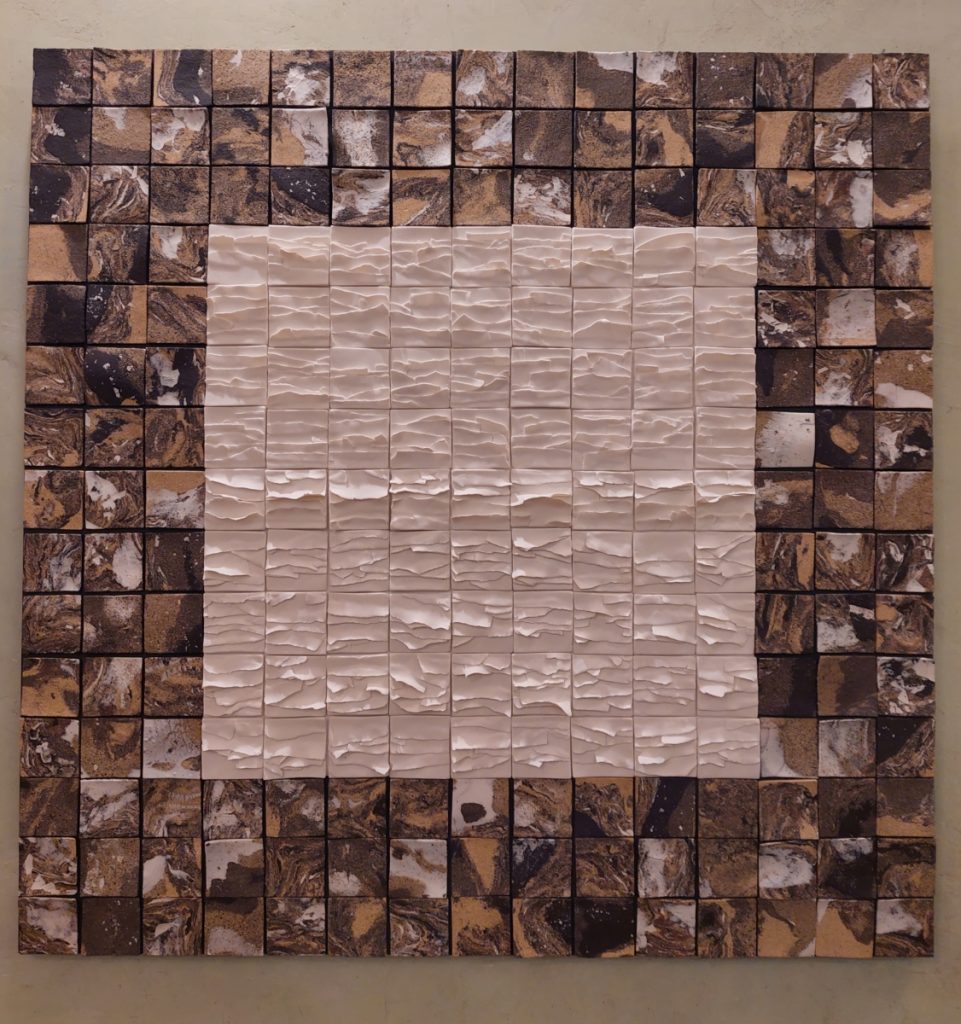
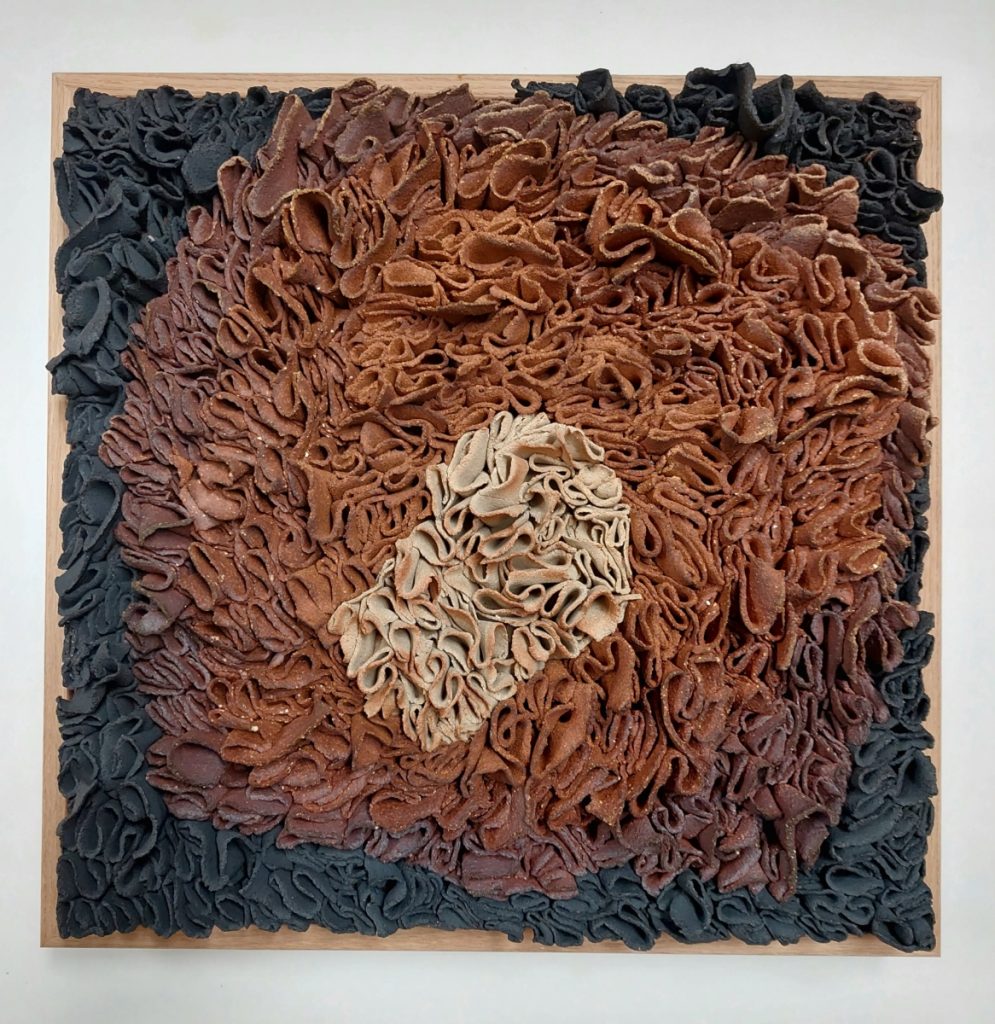

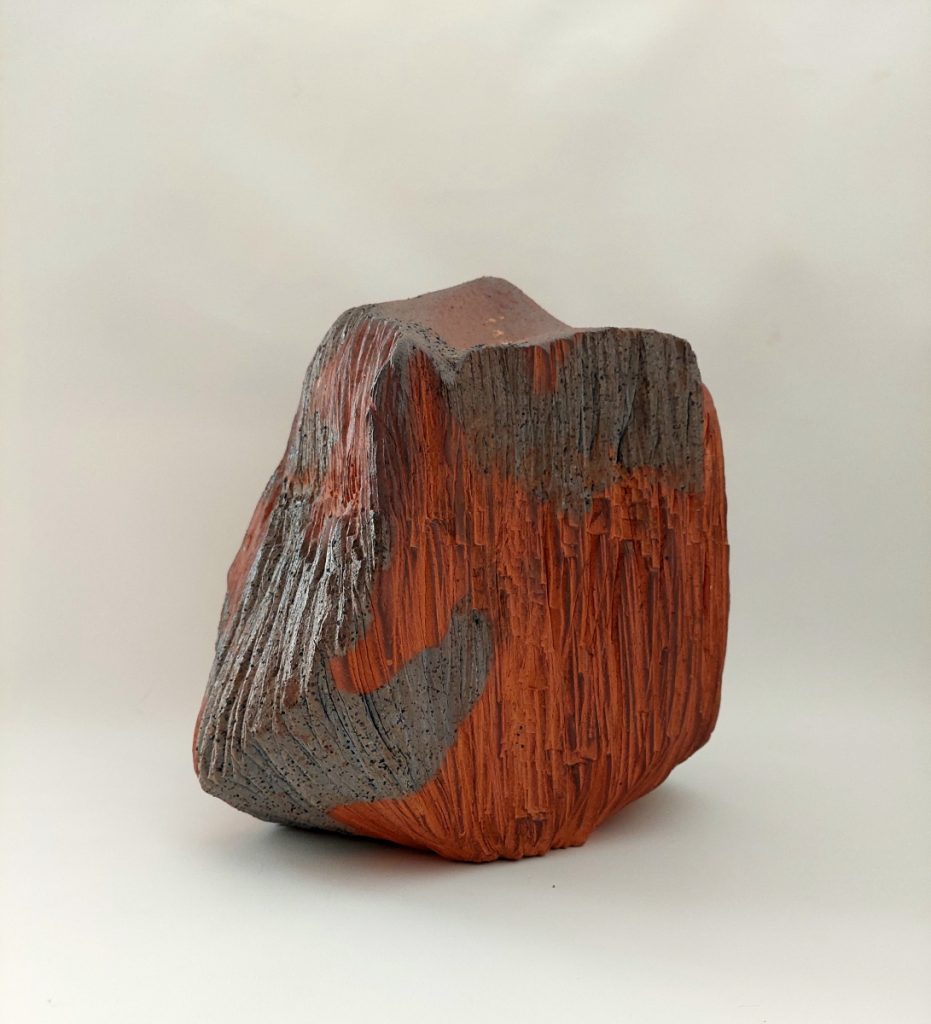
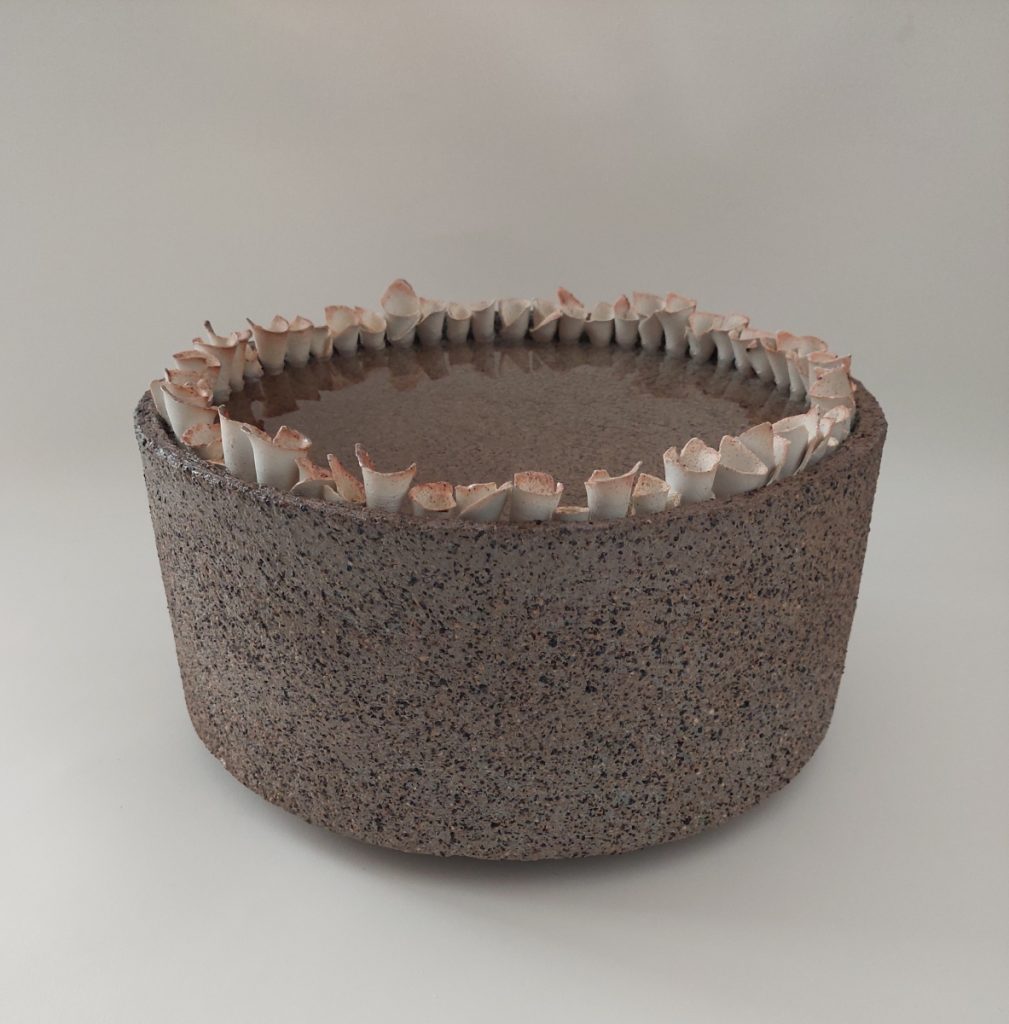
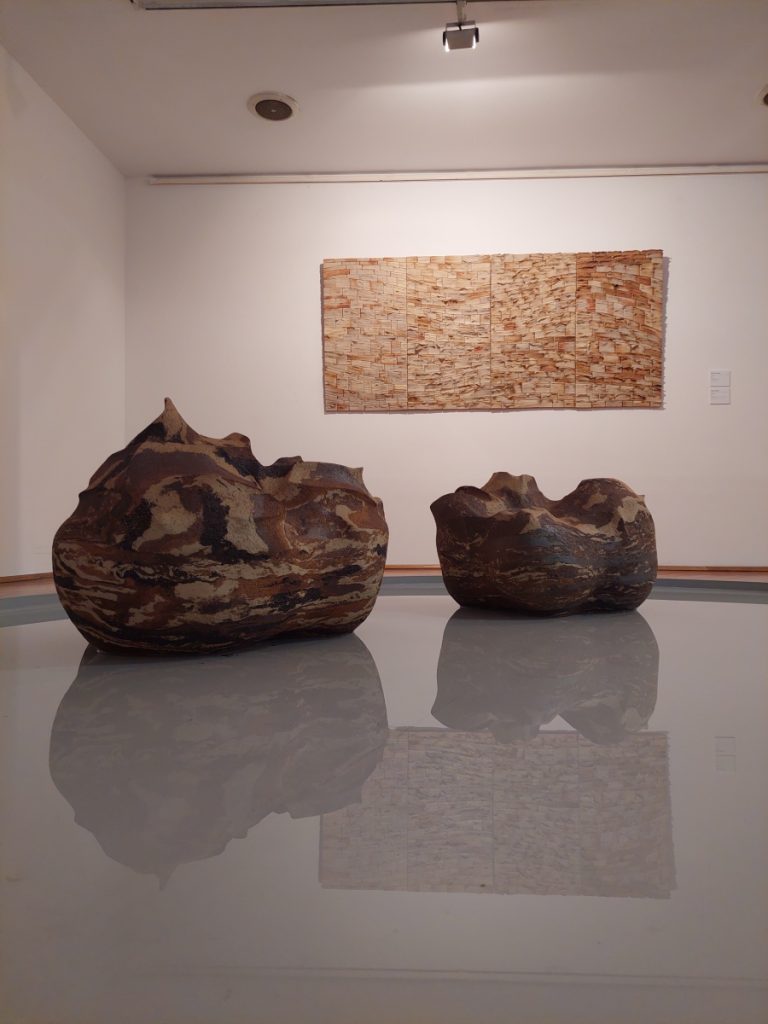
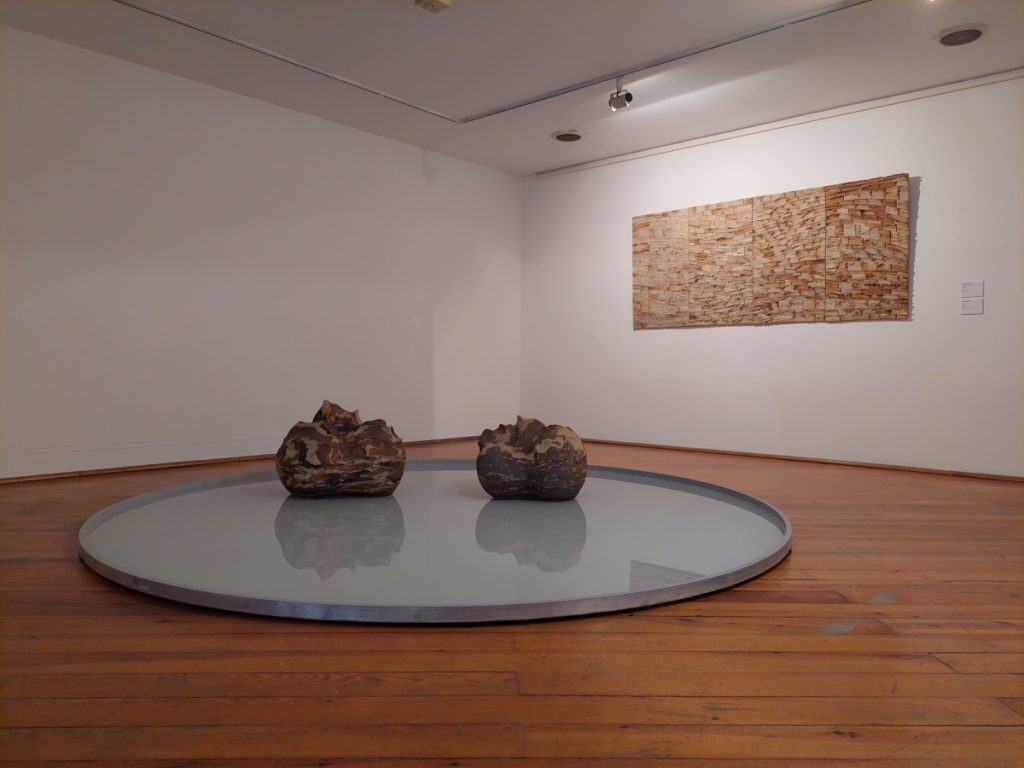
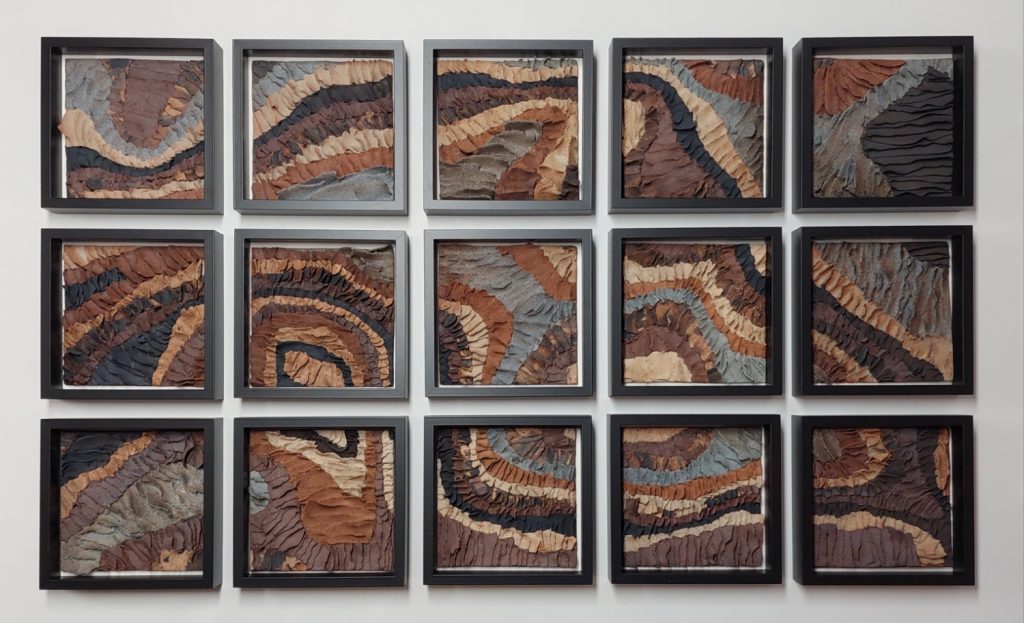
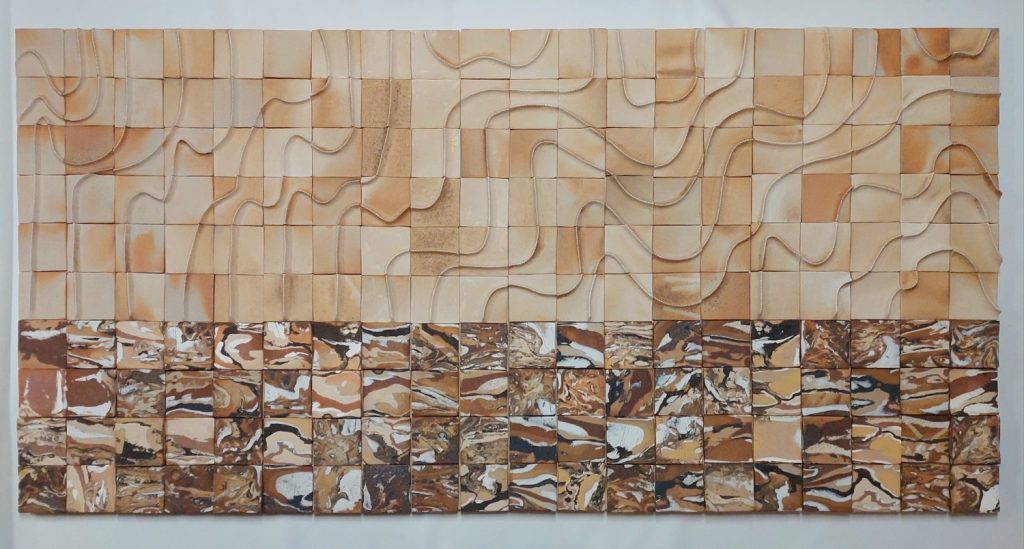
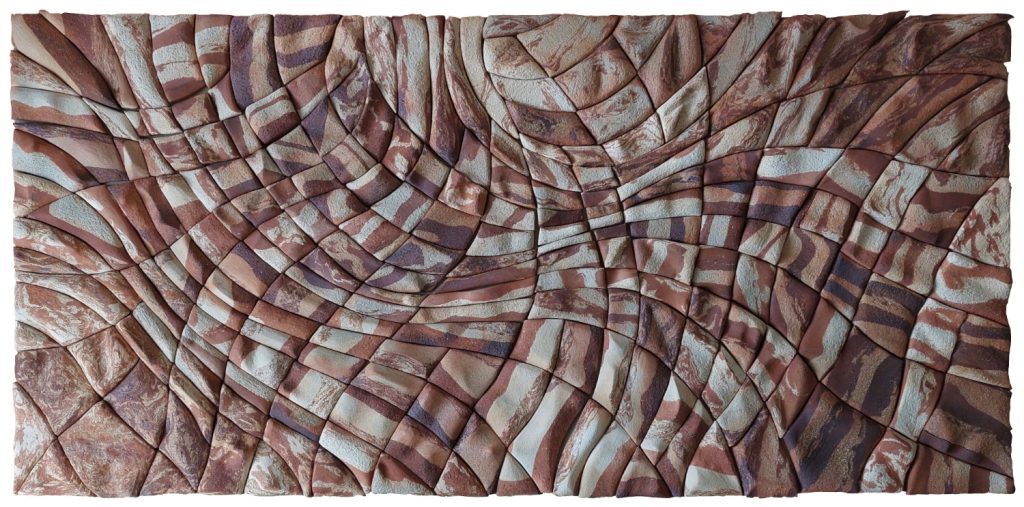
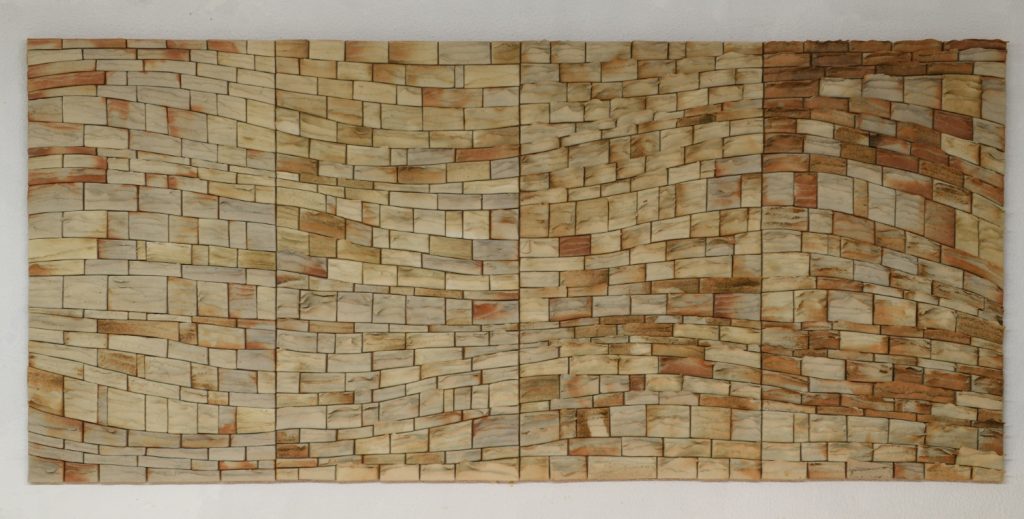
Sofia Beça: Selected works, 2021-2024
The Spell of Sofia Beça’s ceramic artwork
By Margarida Genera i Monells
While preparing a review for Terrart magazine (number 64, 1st semester 2004, Barcelona, p. 60-61), I have had the great pleasure of getting to know the work of Sofia Beça (Porto, 1972), one of the great ceramists of Portuguese lands, who is developing her activity, especially in the field of sculpture and murals made of fired clay.
Through the work of such a simple and humble material as clay — apparently only with her hands, but in reality — with her brain and heart, in unison — she is capable of recreating captivating spaces through the magic of her art, where the ceramic element becomes the real protagonist, inviting the delight of all the senses. For the contemplation of her works allows us to feel — caressing her pieces — perceive with the touch, the textures of the finishes chosen by the artist herself, while visually she introduces you into the small world of plastic beauty, simply natural and human.
After a magnificent formative preparation in ceramics at the Soares dos Reyes School of Decorative Arts in her native city in the late nineties, and other specialization courses in Raku, especially sculpture and murals, under the mastery of great teachers such as Emidio Galassi and Arcadio Blasco, the latter considered by her as her great teacher, she pursued the path that she had chosen by vocation, steadily with perseverance, tenacity, and enthusiasm. She has built a career path based on fundamental principles that distinguish her for her talent and excellence in the results achieved. She is currently a member of the International Academy of Ceramics.
Since 1997, she has been exhibiting successively, both individually and collectively. One of her first exhibitions was at the Museum of Pottery of Barcelos, and she later exhibited her works in several renowned galleries, which we mention below, as well as in museums dedicated to ceramics in Portugal, Spain, the Netherlands, and more. Because of her participation in international events—exhibitions, symposiums, and biennials—she deserves recognition as one of the Portuguese ceramists with the most international projection. Her work has been present in Japan, Argentina, France, South Korea, Austria, Tunisia, Egypt, Poland, Germany, Denmark, China, Latvia, Turkey, Greece, Italy, Slovenia, Russia, Hungary, even with commissions to beautify some public spaces all over the planet.
She has been awarded a large number of prizes and recognitions since 2002, especially in various competitions in the Iberian Peninsula, international ceramics competitions, etc., some of them shared with other artists.
In general, she delights us with very careful work, technically impeccable, inspired by vital facts and intrinsically human activities, such as walking or wandering. She follows the earth as a common thread, not only for the raw material used, but also as her own idea, a source of inspiration from which emanate the slogans, meticulously chosen to create many of her works. In fact, all of them are linked to a theme that imbues them with meaning and gives them a life of their own that can be perceived by those who contemplate them with sensitivity and a desire to connect with authentic art.
Selecting some examples, we refer to space, habitat, mountain, valley, path, garden, territory — the envelopes of the human being and its scenarios from its most remote origins. She is also inspired by feelings such as falsehood, love, and disillusionment, so intrinsic to human life itself.
Technically, she uses stoneware as the raw material, which, once worked, is fired in a wood-fired oven. The designs, in general, are simple outlines, always seeking a compositional rhythm that is reached harmonically, as if it were a musical piece. In her works, the repetitions of elements are interspersed rhythmically and harmoniously, recreating geometries of blurred coloration. In this way, the chromaticism and tonalities are achieved by the action of fire, eagerly inquiring into rough textures, brittle roughness, similar to many of the geological formations, such as rock or sedimentary overlays, thus reproducing the sequencing of a stratigraphy.
Skill, mastery of technique, and exquisite taste are essentially the result of approaches and ideas meticulously calibrated through deep reflection on the human condition on our small planet and its weaknesses, but also showing how sublime a small work of ceramic art can be.
Article by Margarida Genera i Monells, Prehistorian and archaeologist, 2024
Captions
- Flat planning, 2022, stoneware, 98 x 98 x 4 cm
- Stratified territory, 2023, stoneware, 106 x 108 x 6 cm
- Glacial Sediments, 2023, stoneware and porcelain, 100 x 100 x 3 cm
- Imbalance, 2023, stoneware, 44 x 44 x 13 cm
- Homage to love I, 2022, Porcelain, 23 x 23 x 17 cm
- Mountain II, 2022, Stoneware, 28 x 23 x 30 cm
- Termal Bath, 2022, stoneware and porcelain, 33 x 33 x 18 cm
- Islands, 2022, stoneware, aluminum, water, 300 x 300 x 54 cm
- Stratification of paths, 2023, stoneware, 147 x 57 x 6 cm
- Territory in change, 2024, stoneware, 204 x 101 x 4 cm
- Wandering and stumbling, 2021, stoneware, 200 x 200 x 4 cm
- You’re like the waves, 2023, stoneware, 208 x 96 x 5 cm



